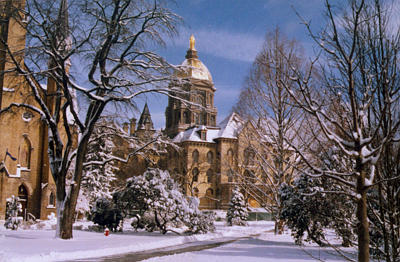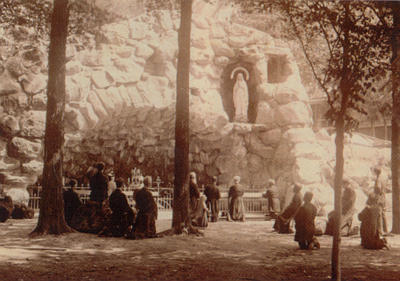
Notre Dame's Grotto / by Dorothy V. Corson


On a Trail of Memories
Father Thomas T. McAvoy, C.S.C., former Notre Dame archivist and historian, made this comment about the importance of recording history: "To have a history is to have a name, and the richer the history the more glorious the name."(1) I had barely begun my research into the archival history of Notre Dame and the Grotto, when the richness of its human history -- that river of humanity that has flowed through the campus for over one hundred and fifty years -- began to surface.
Family stories passed on from generation to generation told of ancestors who were an integral part of the Notre Dame campus. Some helped build the first road from South Bend to Notre Dame, others worked on the Sacred Heart Church, donated the stained glass windows and financed the bell. They brought their horses and mules to help hoist the statue to the Dome after the fire and assisted in building the Grotto.
These same ancestors have descendants who were -- and still are -- students, faculty, and volunteers on campus. Their remembrances started me on a trail of memories that went back to the very beginning of the University when Indians were still a part of it. Fitting together all the material gathered, and verifying it with newspaper and magazine accounts, was like completing an intricate picture puzzle containing pieces of many people's lives.
Along the way, I found myself encountering interesting stories and intriguing mysteries related to Our Lady and the Grotto, concerning both Notre Dame and St. Mary's.(2) Because they illustrate how closely connected the two campuses were from their very beginnings, I took the time to check them out and weave them into this story.
What appeared to be the most difficult part of my search -- contacting strangers whose names came up in my research -- became the most pleasurable. I soon found myself experiencing the reality of Matthew 7:7: "Ask, and it will be given you; seek, and you will find; knock, and it will be opened to you."
Many octogenarians who generously shared their memories with me have since passed away. This story would not be complete without the pieces they added to the Grotto puzzle. Alex Haley, the author of Roots, described, so well, their loss to the world: "When an old person dies, it is like a library burning."(3)
As Father Hesburgh expressed it in a letter of encouragement to me: "Keep up your good work on the Grotto. It is a story yet to be told." Now that all the pieces are finally in place, this narrative has become one of those now it can be told stories that had to wait for the right moment: The Grotto's One Hundredth Anniversary.

Providence smiles on sincere searching
And encourages good energies
-- Bob Hohl
Saint Mary's Cushwa-Leighton Library